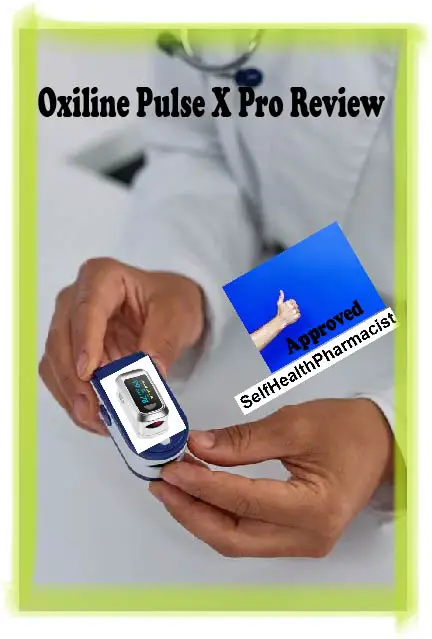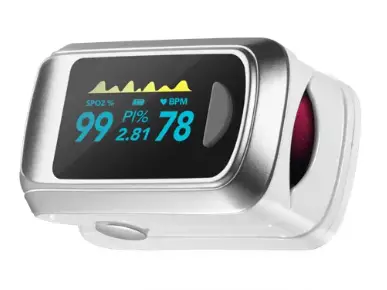In a world where tech giants duke it out for the latest and greatest, Oxiline Pulse X Pro quietly entered the scene and has been making waves like a ninja in the health tech arena.
Now, before you dismiss it as just another oximeter, let me assure you that this unassuming little gadget is far more than just a trendy trinket.
It’s a lifeline, a guardian of your health in times of uncertainty, a silent sentinel that’s garnered quite the reputation for being reliable, sleek, and surprisingly affordable.
So, what’s all the buzz about? Well, Oxiline Pulse X is an oximeter. But not just any oximeter – this is the “cool kid” on the block, the one that does more than what meets the eye.
It’s all about delivering precise, real-time insights into your oxygen levels and heart rate, and it does so with finesse.
You see, it’s not like the traditional clunky health gadgets you’re used to seeing. This is modern tech at its finest – compact, sleek, and designed with your comfort in mind.
Picture this: it’s small enough to slip into your pocket, so you can take it with you wherever you go.
Whether you’re hitting the gym, embarking on a high-altitude adventure, or simply chilling at home, the Oxiline Pulse X can be your constant companion.
It’s not just about the style, though. This pocket-sized powerhouse is packed with features that make it more than just an oximeter.
Let’s talk real-world applications. Say you’re into fitness – you’re out for a run, your heart’s pounding, and you’re gasping for breath.
With Oxiline Pulse X, you can monitor your heart rate in real-time, making sure you’re pushing yourself without going overboard. It’s your personal trainer and health guardian rolled into one.
Perhaps you’re planning a family mountain trip, or you’re just an enthusiast of high-altitude escapades.
The Oxiline Pulse X is your altitude buddy. It keeps a close watch on your oxygen saturation levels, warning you if the thin mountain air starts to mess with your vital stats.
No need to guess whether it’s time to descend to safer levels – this little device has your back.
Think about your elderly parents or grandparents. Maybe they’re not tech-savvy, but they value their health.
Oxiline Pulse X is user-friendly, even for those who aren’t tech wizards. It’s a breeze to operate; a simple clip onto a finger, and voilà! They can keep tabs on their vitals effortlessly, and you can relax knowing they’re safe.
You’re probably wondering, “Does it live up to the hype?” Well, let’s dive into the nitty-gritty of what makes Oxiline Pulse X a game-changer.
The magic lies in its accuracy. It uses state-of-the-art technology to provide highly precise measurements, and it does so in the blink of an eye. No more waiting around for readings, no more second-guessing. Just quick, reliable data that you can trust.
What’s more, Oxiline Pulse X boasts a brilliant OLED screen that’s clear, crisp, and easy on the eyes.
You can read your data even in bright sunlight, which means no more squinting and angling your device just right to see your vitals.
But here’s the kicker: Oxiline Pulse X goes above and beyond to keep your health data organized and accessible.
It’s equipped with Bluetooth technology that syncs seamlessly with a dedicated app on your smartphone. This means you can track your health data over time, spot trends, and share the information with your healthcare provider.
The app stores your data securely and helps you make informed decisions about your health and well-being.
Think about it – in today’s fast-paced world, where time is of the essence, Oxiline Pulse X Pro doesn’t just give you readings; it gives you insights into your health journey.
It empowers you to make positive changes, to stay on top of your health, and to have all your vital information at your fingertips when it matters most:
Table of Contents
Oxiline Pulse X Pro My Personal Experience
It is the highly recommended fingertip pulse oximeter with the easiest adjustment to your smartphone.
It can measure your Saturation Measurements and Perfusion Index in several seconds.
The screen of the pulse oximeter is protected by a film. I took it off immediately, for better visibility. The screen is glossy black.
The measurements on display have some colors, the image itself is good, high-quality performance.
Batteries are included with a pulse oximeter. When you turn the power button it immediately starts to register your pulse and saturation level.
The Measurements you will see on the screen after a few seconds of measurements.
It turns itself off automatically when it does not sense your finger.
The instruction card itself is short, but there is nothing special to tell here and it is not necessary, only about the possibilities and settings.
After switching on, the device emits infrared rays of different lengths and illuminates blood cells, which, depending on the degree of oxygen saturation, absorb light in different ways.
The pulse oximeter picks up fluctuations in saturation and displays the results on a small screen.
The normal level of oxygen in the blood is 95-100%. Lower rates may be observed in smokers or people with respiratory and cardiovascular problems.
In the settings (called by a long press on the main button when the finger is inside) you can turn off the annoying sound of heart rate monitoring, as well as set your own values for the Alert signal – at what saturation and heart rate readings (minimum and maximum) the device will emit a warning signal.
What I like about this pulse Oximeter is that it has the best features in the app called :the profiles.
All My family members use this pulse oximeter and they have their own profile and the coolest thing is that we do not mix our readings, everything is stored separately in the app.
The most Important thing is that this device gives you accurate measurements. I am sure about this because I verified my oxygen level with the most accurate Wellue O2 Ring on the market today.
PI can vary over a wide range. In the first seconds of measurements, it is usually larger, and then decreases. Today it can be 15, and tomorrow 3.5.
In general, this indicator measures the strength of the pulse at the measurement site.
It is believed that normal rates are in the range of 4 to 7%.
And it is with such indications that measurements of saturation can be considered reliable, since the device receives enough information due to the desired blood flow pressure.
This is how I understand it at the moment.
Is Oxiline a good brand?
Yes, all Their models of the pulse oximeter and blood pressure monitors are considered universal, since the devices can be used by both professional doctors and ordinary users at home.
The principle of operation and control of the device is extremely simple. It is enough for the patient to put a clothespin on his finger and press a small button on the case.
Data on the level of oxygen in the blood and heart rate will be displayed on a small screen in 8-10 seconds.
As for pulse oximeters. All of them run on two standard AA batteries, and the device itself is energy efficient, so you don’t have to change batteries often.
Users also positively assessed the screen of the device: it is large enough, and the displayed characters are large, so even patients with low vision can read the data.

The Main Features of Oxiline Pulse X Pro
| The Possibility of Wireless Connectivity
|
There is Bluetooth connectivity to all your Apple & Android devices with a feature packed app. |
| VTEC AX Sensor | VTEC AX sensor uses four multiplex transmitters for a better providing unparalleled accuracy of results every time. |
| Unlimited Data Storage | You can store your results in a log format and you can easily share it with the doctors anytime. |
| Adjustable Alarm | You can get the results immediately if the measurements are below the borders. |
| Plethysmograph Wave | It can help you in the visual Perfusion Index in your smartphone in real time… |
Are at home pulse oximeters accurate?
It is important to remember that a portable home pulse oximeter is a device for home use, for the purpose of screening, it does not always give an accurate result.
And in today’s environment, even approximate results of blood oxygen saturation is important, and there are some tips for the correct use of a pulse oximeter.
- Fingers should be warm and dry. Cold or damp hands can cause low readings.
- Thick nails, nail polish can also underestimate performance.
Bruises, tattoos on the fingers can cause inaccurate readings. It’s better to choose another finger to measure. - Keep your hand and finger still and do not move yourself during the measurement.
My Thoughts
I would recommend Pulse X Pro which occupies a strong position in the top best pulse oximeter ranking and boasts a measurement accuracy of up to 98%.
It can be used by both professional specialists and ordinary users at home. The latch fits snugly to the finger and does not move out during operation.
The gadget consumes a minimum of energy, so it does not require frequent replacement of batteries.
The model is recommended for people with poor eyesight, as all indicators are displayed in large characters on a large screen.
The display also has an additional backlight.
FAQs
What are the disadvantages of Oxiline Pulse X Pro?
It often happens that the Oxiline Pulse X Pro shows low saturation values that do not correspond to the actual situation of a person – in fact, a person does not feel so bad.
Do not be afraid, try to measure on the other hand a few more times and take into account the greatest result.
This does not mean that the saturation “jumps” – remember that the screening device is very sensitive to the position on the finger and gives an approximate result.
Which Finger to use for Oxiline Pulse X Pro?
It is attached to the phalanx of the index or middle finger of the hand, the button is pressed, and after a few seconds the main data will be displayed on the screen.
Why Do I Need to Get Oxiline Pulse X Pro?
Monitoring saturation at home against the background of the course of a respiratory infection will allow timely detection of a deterioration in the condition, informing the attending physician about this and preventing possible complications.
